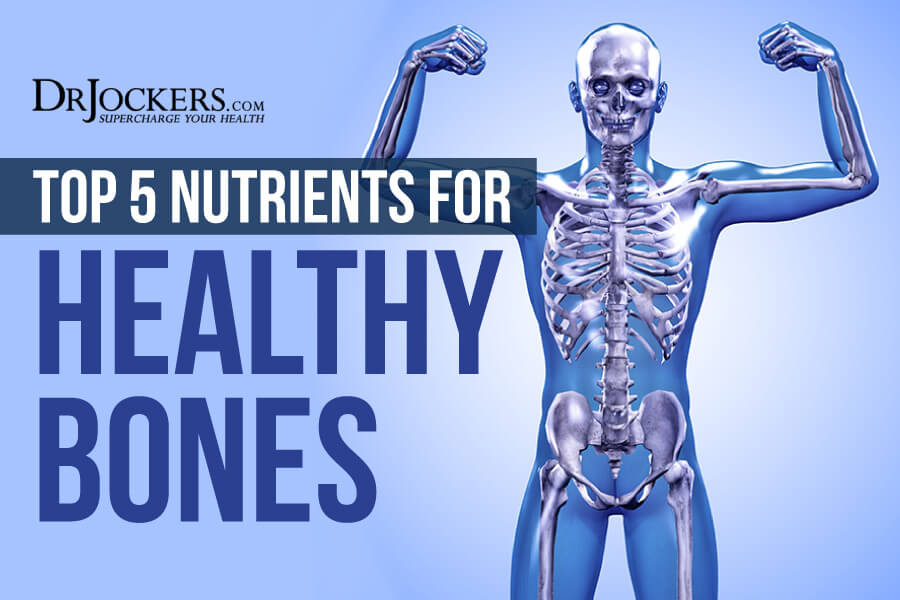
The Top 5 Nutrients for Healthy Bones
Our culture has an epidemic of osteoporosis. This is most common in women after the age of 50, where half of these individuals will experience a fracture due to weakened bones (1). A unique synergy between vitamin K2 and vitamin D3 appears to be the answer to bone loss and calcium homeostasis.
Most people assume that bones are static in nature. However, they are dynamic structures that are constantly building and remodeling themselves. The bone building equation revolves around two major cells. Osteoblasts are specific cells that build bone and act to increase mineralization. Osteoclasts work to break down bone tissue in a catabolic manner. Together, these two cells act in synergy to balance the equation and effectively remodel the structures for healthier and stronger bone tissue.
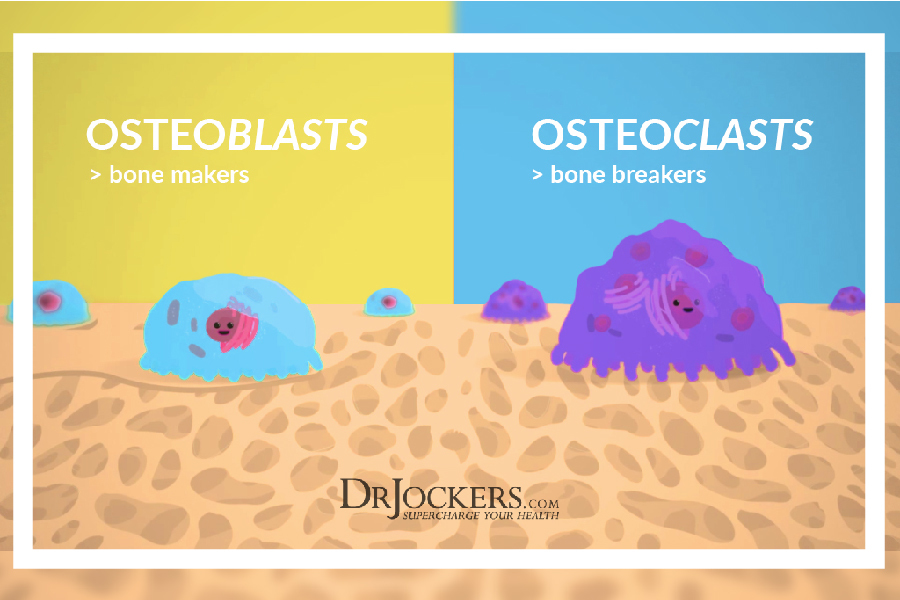
Bone Density and Bone Strength:
Most medical professionals assess bone strength from a classic DEXA scan. This test measures the density, which is directly related to the degree of mineralization within the bones. However, bone mineral density does not directly result in bone strength.
Classic bone density medications are called bisphosphonates. These drugs are designed to destroy osteoclasts. This results in decreased ability to effectively remodel bone. This improves density, but research has shown that it decreases the necessary collagenous flexibility necessary for adequate bone strength. This reduced osteoclastic activity creates rigid bones that are prone to fracture (2, 3).
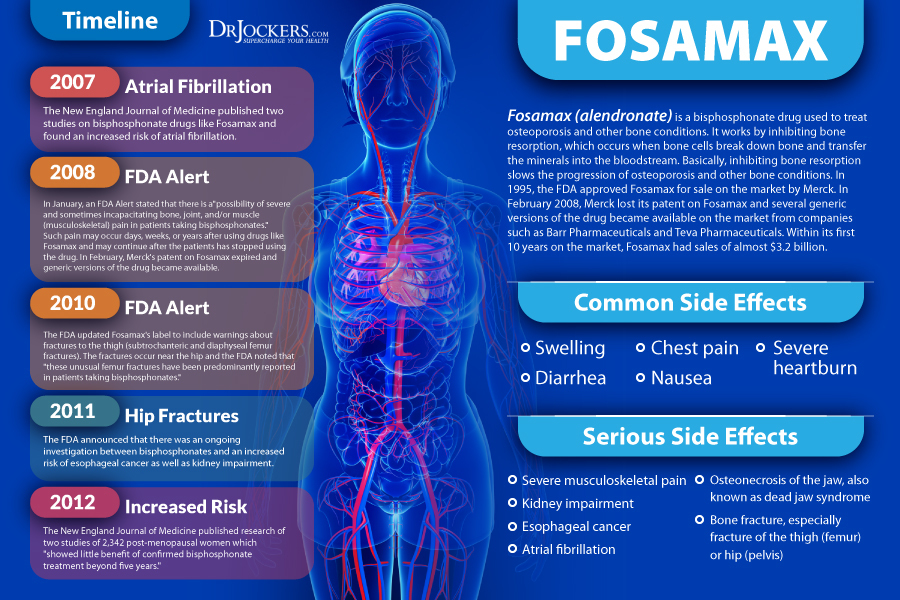
Bone Stability in Post-Menopausal Women
Osteoporosis becomes a very big problem for women after they reach menopause. This is due to the key bone-building characteristics of estrogen. Estrogen helps activate vitamin D3’s calcium absorbing properties. When estrogen levels drop, it increases osteoclastic activity. Low estrogen also increases an immune factor called IL-6 that triggers inflammatory damage to the bone tissue. This combination causes a dramatic change in bone tissue health (4, 5).
The combination of vitamin D3 and vitamin K2 works to counteract this. These two activate proteins that inhibit osteoclastic activity naturally while boosting bone building proteins to keep the balance between bone building and breakdown in order (6).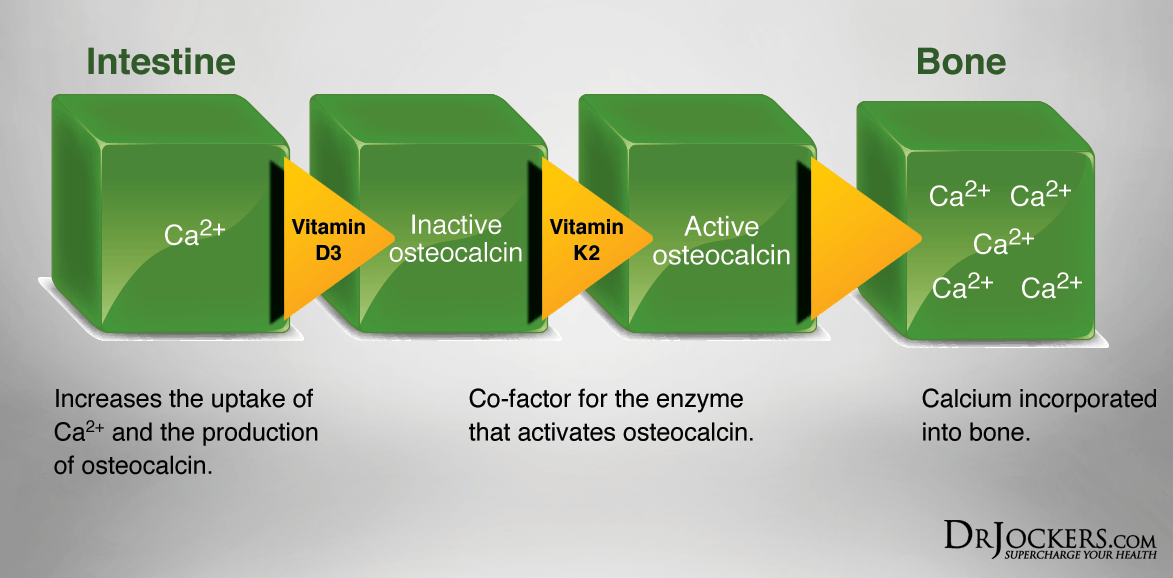
Ratio Between Vitamin D3 and K2:
Too much vitamin D3 without the right amount of vitamin K2 has been shown to be hazardous. Vitamin D3 increases the demand for K2 as well as the potential to benefit through the bone building proteins osteocalcin and Matrix GLA protein (MGP). These proteins activate calcium channels to pull calcium into the bone and out of soft tissue structures. Be sure to consume these vitamin D3 and K2 together for optimal bone and cardiovascular health.
Organ transplants create a stress response within the body that leads to significant decreases in bone mineral density. Individuals who have had organ transplants have a 34 times greater risk of fractures. Vitamin K2 has been shown to prevent this bone loss in organ transplant (7, 8).

Best Sources of Vitamin K:
There is much misinformation regarding vitamin K. Many magazines and natural health articles highlight dark, green leafy vegetables as a great source of bone-building vitamin K. Green, leafy vegetables are a phenomenal source of antioxidants and trace minerals as well as vitamin K1.
This K1 is only minimally absorbed by the body. Researchers estimate that about 10-15% is readily absorbable. Research has found that vitamin K2 is more than three times as effective as K1 at activating osteocalcin.
The best foods for vitamin K2 include fermented soy products such as natto and tempeh. The best food sources for healthy bones are fermented raw dairy products from grass-fed animals. Raw cheese from grass-fed cows provides the perfect ratio of vitamin D3 and K2, along with ionic calcium and omega-3 fatty acids, which are all important for healthy bone structure.
Key Bone Building Nutrients:
1. Vitamin D3: – Best source is high quality sunlight on the majority of your body (sunbathing) on a biweekly basis. You can also consume pasture-raised egg yolk, organ meats, and cod liver oil for added D3. Taking a high quality supplement that provides 1,000 IU per 25lbs of body weight of D3 in a medium-chain triglyceride base is the recommended way to supplement.
2. Vitamin K2: Best food sources include fermented foods such as natto, tempeh, kimchi, sauerkraut, and fermented grass-fed dairy sources such as cheese. Pasture-raised egg yolk and bone marrow in bone broth also contain K2. I recommend supplementing with moderate doses of K2, such as 1-2 mg daily if you have osteoporosis. I use the Vitamin D3/K2 Power here
3. Omega 3 Fatty Acids: These help to reduce inflammation and provide building blocks for healthy hormones that regulate bone tissue formation. Eat grass-fed meat, pasture-raised eggs, wild caught fish, green veggies, and flax/chia/hemp/pumpkin seeds. I also recommend supplementing with 1-2 grams of high quality fish oil daily.
4. Magnesium: This mineral is necessary for over 325 enzymes in the body and is key for all vitamin D regulating pathways. Best food sources include green vegetables, seeds, and grass-fed dairy. Juicing greens is one of the best ways to load up on magnesium stores. If you are under a lot of stress, I recommend supplementing with brain calm magnesium here
5. Calcium: Key building block for bone tissue. Best food sources include green vegetables, seeds, and grass-fed dairy. I recommend focusing on diet first to get enough calcium by eating a salad everyday, adding in steamed veggies, and doing green juicing or greens powders as often as possible. You can also add in grass-fed dairy sources such as raw cheese, grass-fed kefir or yogurts, and butter/ghee.
If you would like additional supplemental calcium, it is always a good idea to take it in combination with magnesium. I recommend our CalMag Support here
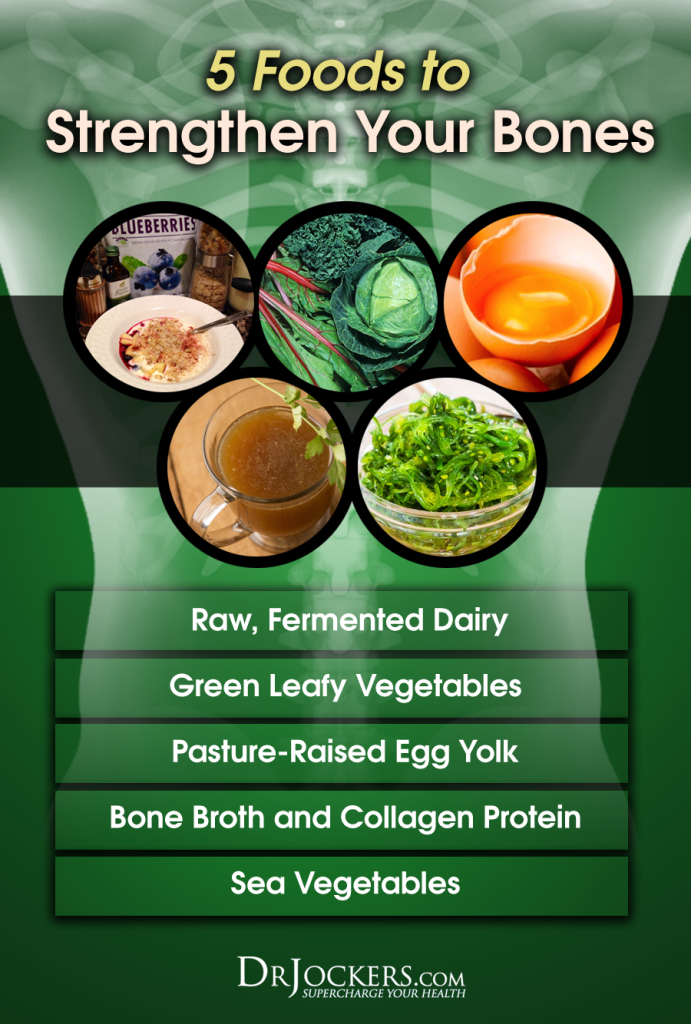


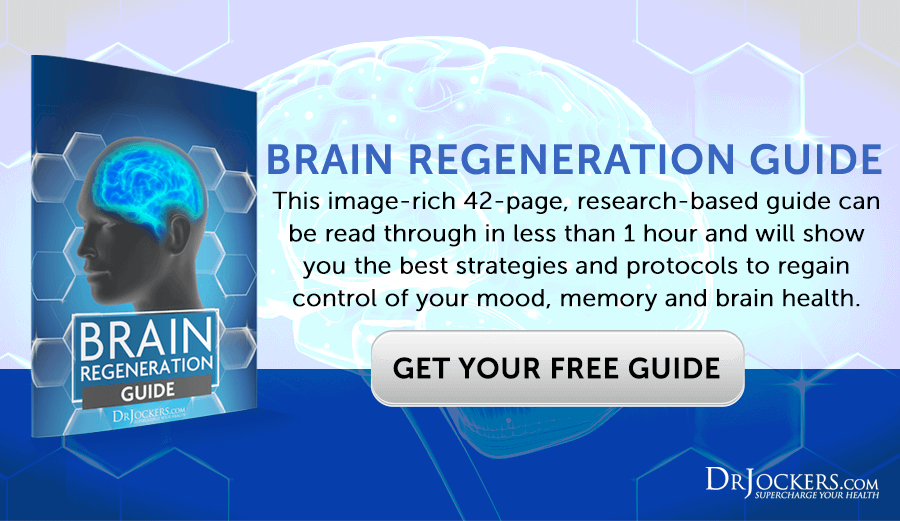


White Blood Cells are made in the bones, Has there been a study to show people with low White Blood cell count that get a bone density test has been worthwhile. The bone density test commonly done on the ankle.
*Refined sugar also takes out White Blood Cell count, So obviously the health care provider would have to untick a few boxes from the big picture, so there is a stronger link to poor bone health or Osteoporosis as one of the few that is left
I have osteopenia. Will your Cal Mag be good for that. I use Brain Calm. I do not want too much calcium. The Doctor wants me to take 1200 MG. I do not want kidney stones. I eat a good diet and grass fed everything. What do you suggest I do.